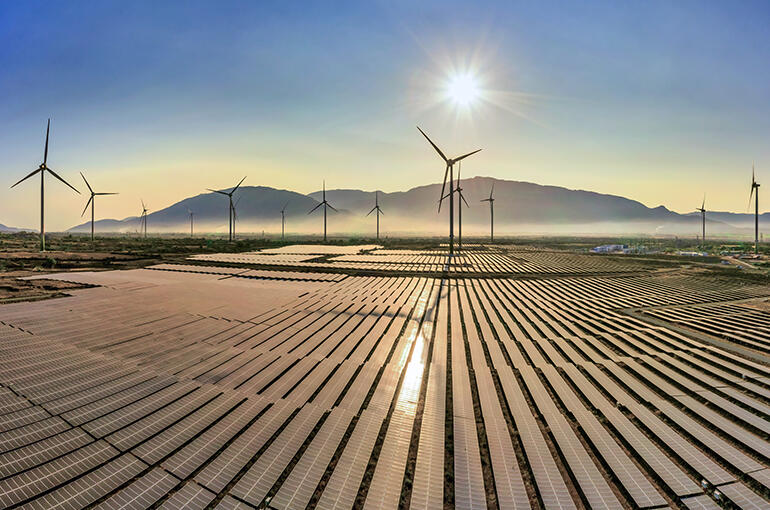- FR
- EN
Infrastructure loans: a credible tool in the fight against climate change
To avoid an economic shock, the transition to cleaner energy needs to happen smoothly.

Over the past few weeks, climate and decarbonization issues have taken on greater significance for oil supermajors. Exxon has had to concede board seats to candidates put forward by an environmental activist fund that represents just 0.02% of the share capital, but that has the backing of institutional investors such as Blackrock (its second biggest shareholder with 6%). At the Chevron AGM, a proposal to reduce emissions generated by the company’s customers has been approved by 61%, although the board urged shareholders to reject it. In the Netherlands, the district court in The Hague has ordered Royal Dutch Shell to drastically decrease its emissions and rapidly comply with the Paris climate agreement. By 2030, the company will have to cut its CO2 emissions by 45% compared to 2019 levels.
Pressure is mounting from all stakeholders. A recent PwC study showed only 8% of the companies making up the Global Fortune 500 have pledged to net zero. The momentum is certainly going to increase.
Nevertheless, fossil fuels (coal, oil and gas) still account for more than 80% of primary energy consumption, and production has not yet peaked. Over the last 30 years, oil reserves have increased by 50% and, based on the current rate of production, 50 to 100 years of reserves are still available. According to the methodology developed by the IPCC (Intergovernmental Panel on Climate Change) to calculate the level of CO2 emissions needed to achieve even a 50% probability of limiting global warming to below the 2° objective, two thirds of those known reserves will have to be left underground. If these assets are stranded, the economic losses will be heavy, and the cost of fossil energy could potentially skyrocket.
This could have a detrimental impact on global economic growth, with higher costs for the consumer. According to the EIA, the world uses 96 million barrels of oil per day, so an oil price of USD 100 /bbl rather than USD 60/bbl would cost consumers USD 1.4 trillion per year.
To avoid an economic shock, the transition to cleaner energy needs to happen smoothly. And as time is ticking, the key is to allocate capital to install new generation capacity.
For investors, the challenge is not just to avoid investing in players who are not acting to comply with the Paris agreement, but also to actively promote renewable energy.
Hopefully, renewable energy will soon become a serious and competitive option. According to the International Renewable Energy Agency, generation costs for onshore wind and solar PV have seen annual decreases of 3% and 16% respectively since 2010.
Historically, one of the risks embedded in this asset class has been its dependency on government subsidies. In 2007, Spain was paying a premium of USD 556 per megawatt-hour for electricity produced by rooftop solar panels, compared to USD 52 for electricity generated by fossil fuels (coal or gas).
This risk has significantly decreased. In Europe, the most recent bid solicitations for offshore wind farms in Germany and the Netherlands were partly made with no price guarantees, and the same is true for solar power in Spain. In France, the price has been set at EUR 44 / MWh for the latest project in Dunkirk, in line with the contractual price at which EDF sells its nuclear energy to alternative suppliers.
Nevertheless, while the regulatory risk has decreased, it has been implicitly replaced by a merchant risk (i.e. more exposure to electricity price volatility).
To address this new risk, creditors are looking for structures with corporate PPAs (Power Purchase Agreements), to set up a solid contractual framework and to avoid onboarding too much exposure to price volatility on the electricity market. The funding for such structures demonstrates a resilient risk approach (with shorter maturities and lower leverages) and higher returns than subsidized projects.
Hence, infrastructure loans provide an opportunity to actively participate in projects that support the reduction of carbon emissions, while also offering an attractive risk-return profile.
Fabrice Rossary
CIO SCOR Investment Partners
This article is an opinion article and does not constitute investment advice or recommendations. Neither the author nor SCOR Investment Partners assume any liability, direct or indirect, that may result from the use of information contained in this opinion article.